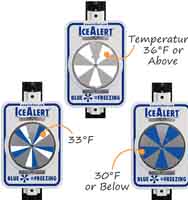Ink Manufacturing Safety
These employee safety recommendations were developed by the NAPIM EHS Committee:
Ashley Rooney, Kevin Cochrane – INX International, Leyna Force Colorcon NO-TOX Products, Kris Johannsen – Toyo Ink, Chris Stenger – Sun Chemical, James Ford – Flint Group, Julie Backstrom, Gary Klukow, Lee Kearson – Seigwerk
In-Plant Safety Recommendations (July 2023)
Equipment
- Blade on chains helpful in insuring proper equipment stays in the work area
- Use knives with retractable blades
- Ceramic blades that work well depending on the type of bag (do not work well with Super Sacks). Lacerations are still possible with ceramic blades
- Hay bale blades on extended handles worked well

- Round blades help reduce stab type wounds
Work Practices
- Super sacks can be hoisted up to cut the bottom of the sack more easily
- Using hopper systems has reduced the need to cut bags
- Watch workload increases insuring that shortcuts are not being taken on the basis of the increased workload.
- Very important to insure the in-plants have the correct equipment like pallet jacks and drum tilters.
- Very important to make sure that the in-plants recognize that the company is very concerned about safety in their remote work environments. Insuring that they do not feel isolated.
- Include in-plants in all quarterly Townhall-type meetings.
- Record monthly safety meetings. Require in-plants to watch the recorded meetings.
- Empty drum moving inside a trailer is a source of injuries because of the limited space available, manual stacking causing strains. Mechanical assistance devices are available but are slow. Training and enforcement is effective.
Training
- Training sessions focusing on how to cut (focusing on cutting away from the body)
- Hazard recognition 30 minute exercise – plant walk-through hands-on hazard identification and corrective actions - very useful in reducing injuries
- Training and enforcement proper bag cutting techniques very effective
- Safety training through an online service is effective
Contrib. Factors
- Insure employee safety training is conducted as high turnover rate has is becoming more common
- Repetitive work injuries are occurring from emptying bags 25 - 40 lbs
- Be aware of older workforce issues with manual materials handling operations
Reducing Slips, Trips, Falls and Materials Handling Injuries (October 2023)
Equipment/Supplies
- Drum moving equipment is essential
- Scissor lifts for pallets can be very effective in some ink manufacturing locations
Work Practices
- Using bulk bags rather than smaller bags discourages some manual lifting because of the larger size
- Review all raw material container sizes to insure that small volumes are used where available
- Palletize raw materials
- Place raw materials at waist height or where usage/dispensing occurs
-
Post Parking lot Slippery Conditions Warning; Insure all warning signs (interior/exterior) are removed when hazardous conditions no longer exist.

Training
- Behavior based safety training is effective at changing work practices/culture in the manufacturing environment
- OSHA Behavior based safety guidance
- Regularly scheduled safety meetings are very effective at reducing injuries.
OSHA Revisions to the Hazard Communication Standard (February 2024)
Denese Deeds of Industrial Hygiene Safety Consultants (Shelton, CT) discusses the changes OSHA has proposed to the Hazard Communication standard that could affect the ink manufacturing and supply chain industries. Ms.Deeds' presentation can be downloaded here